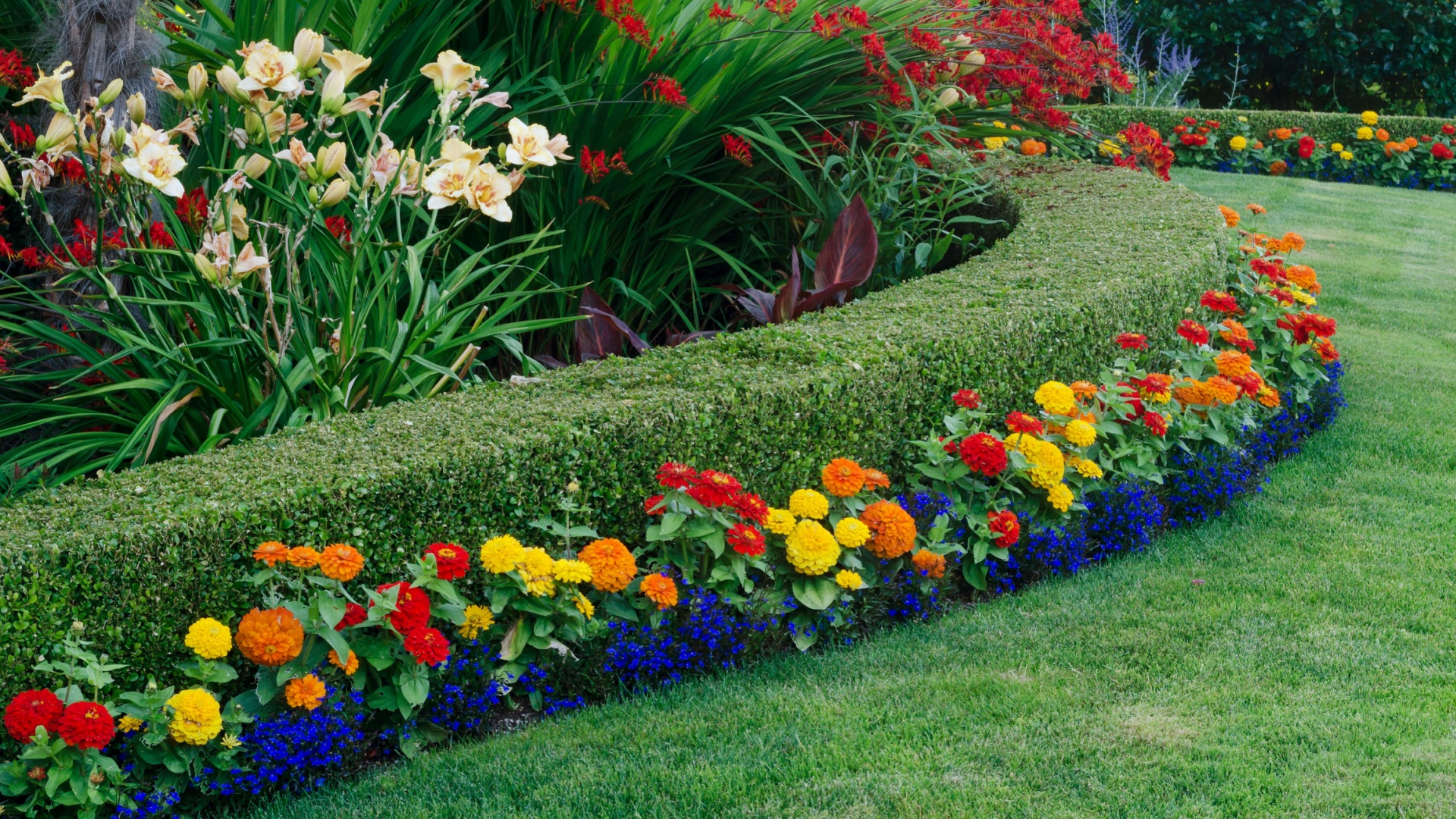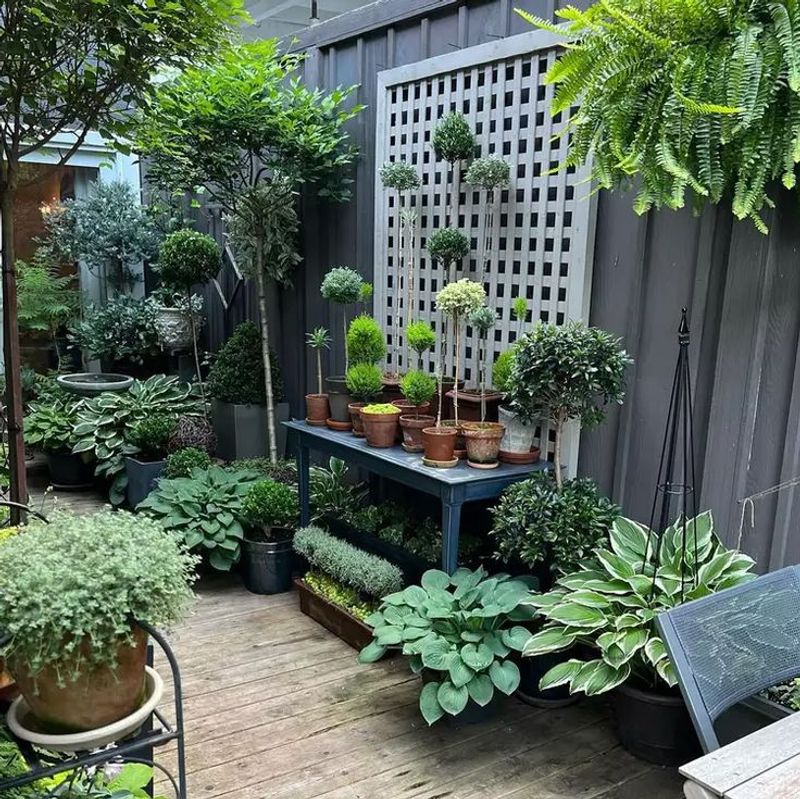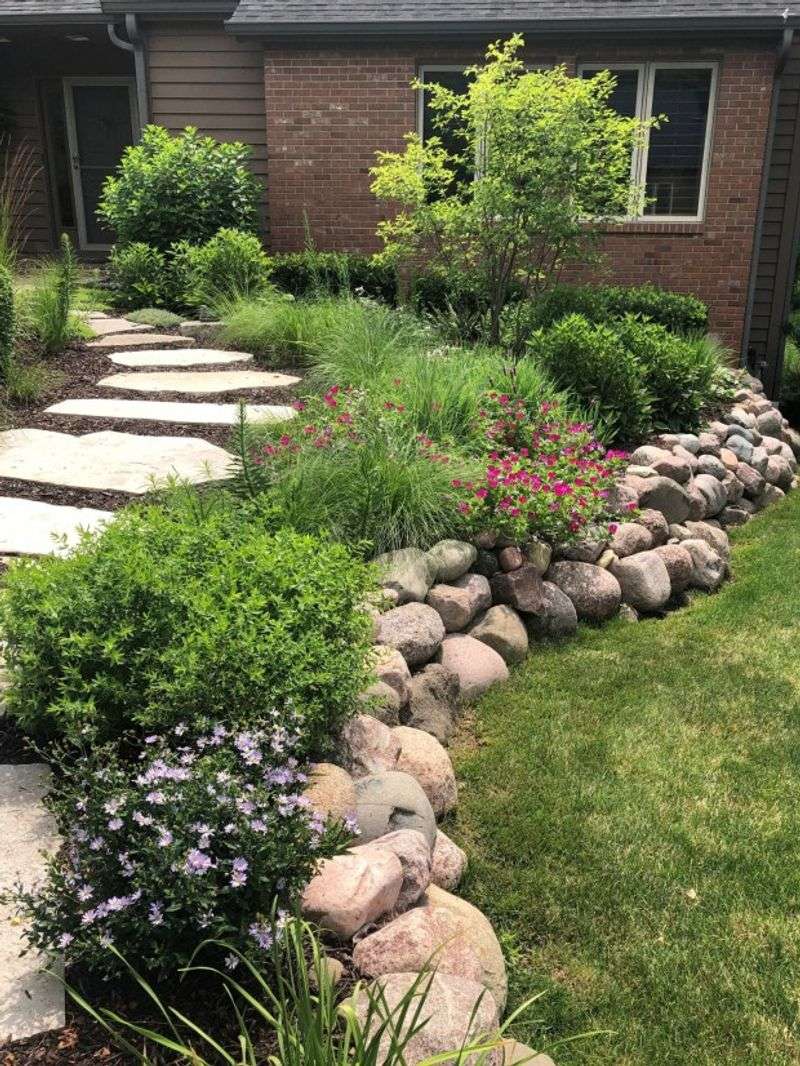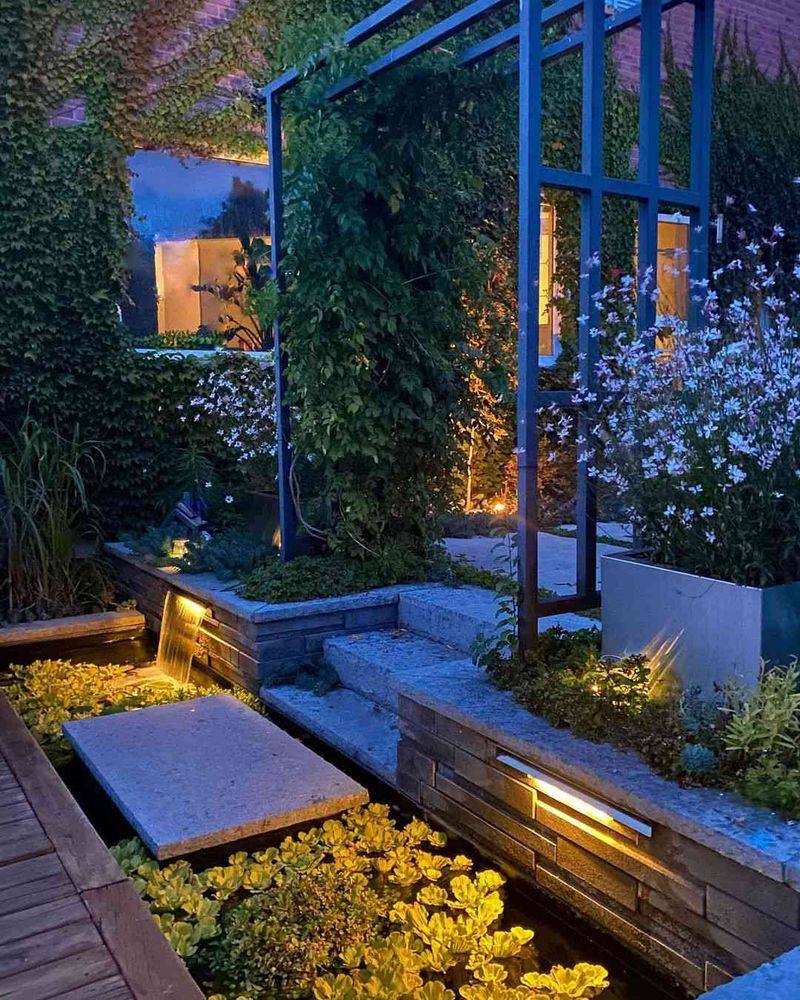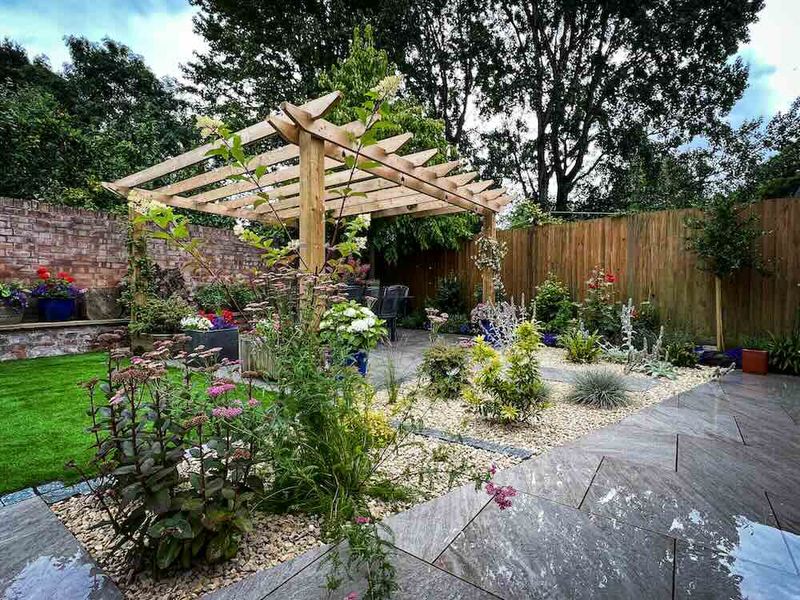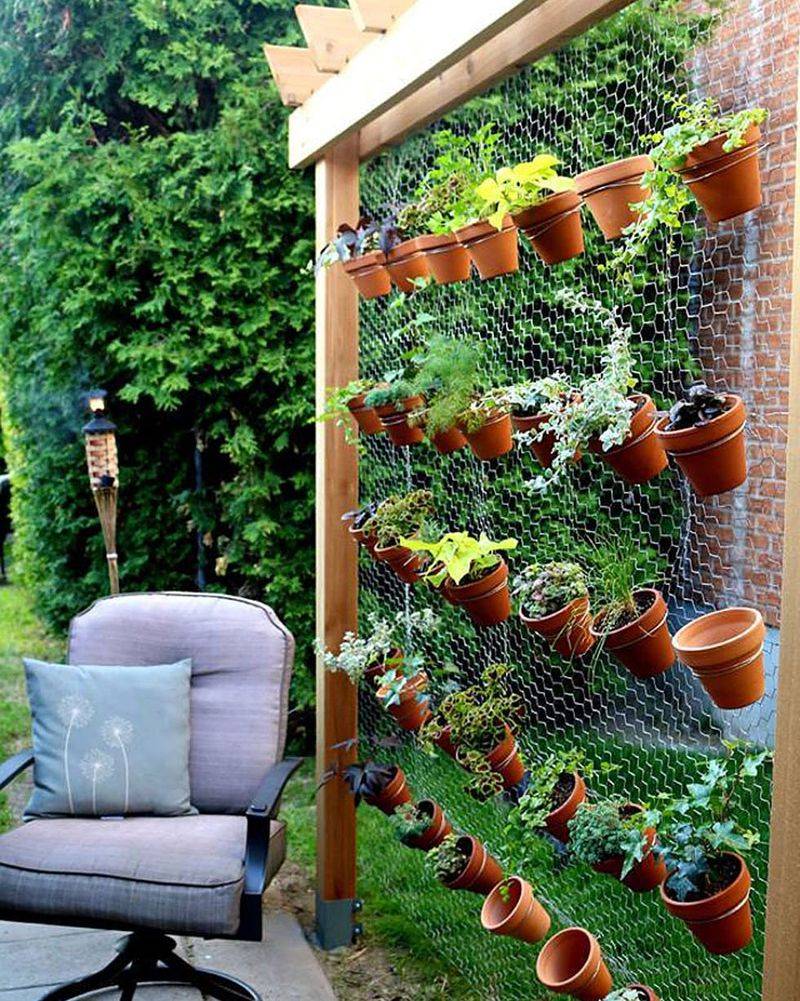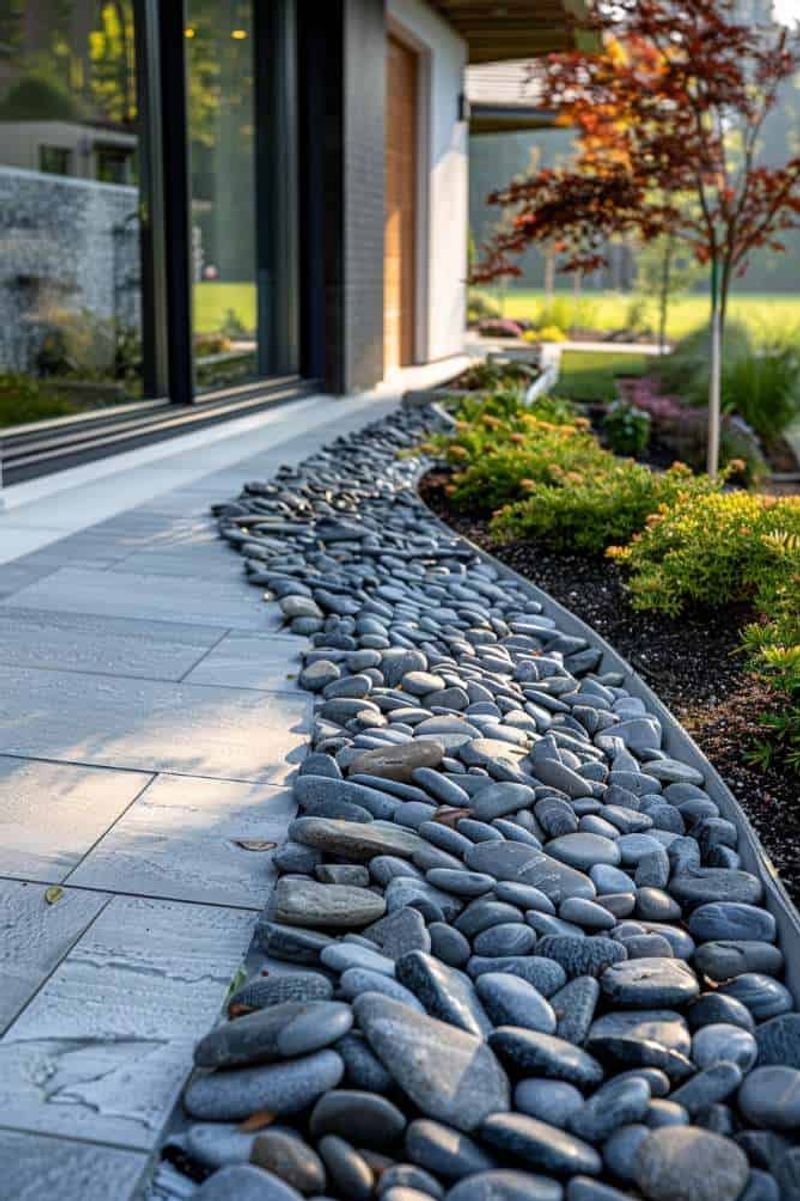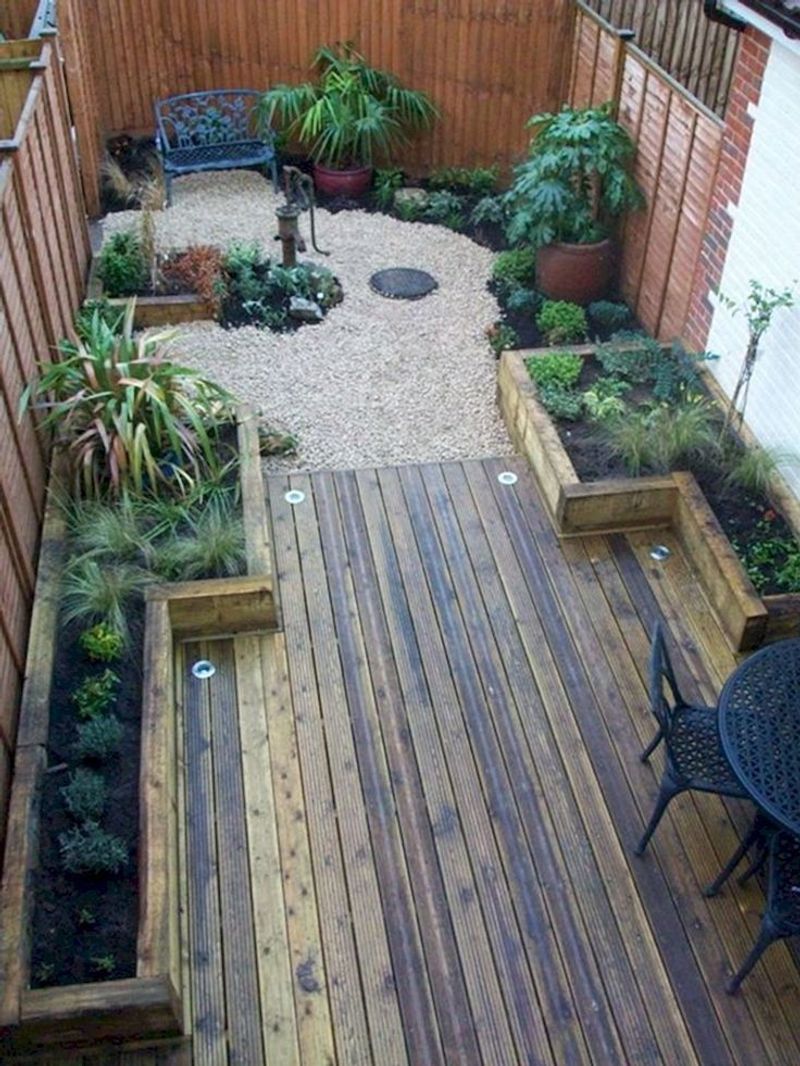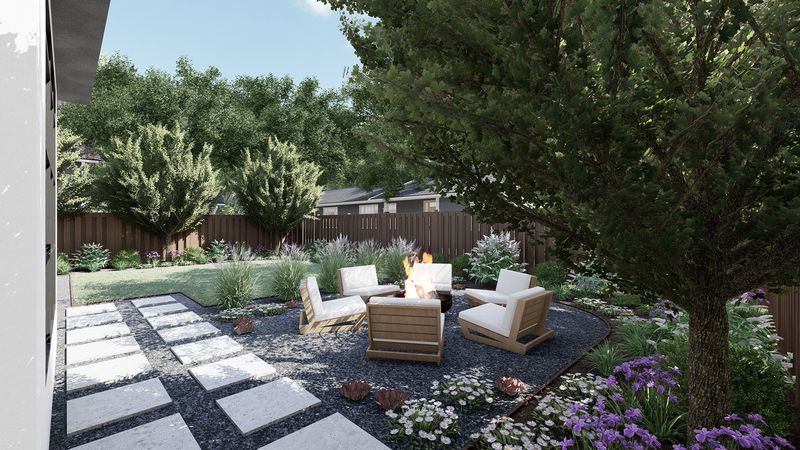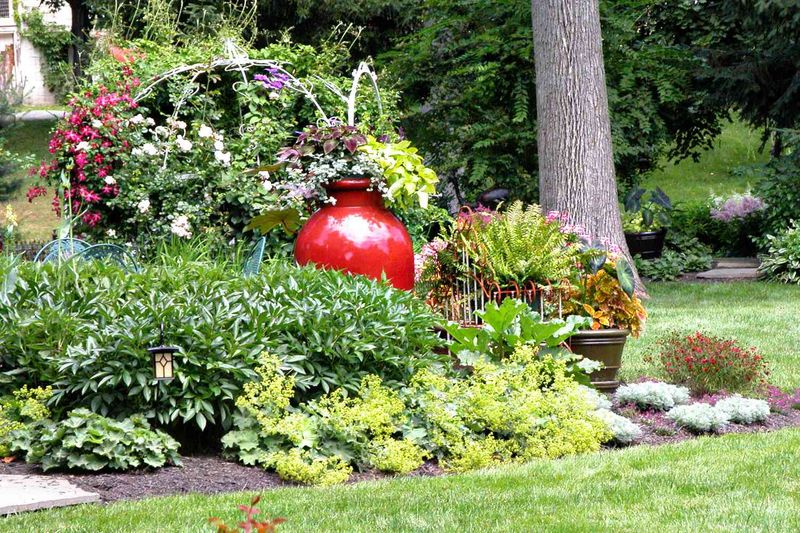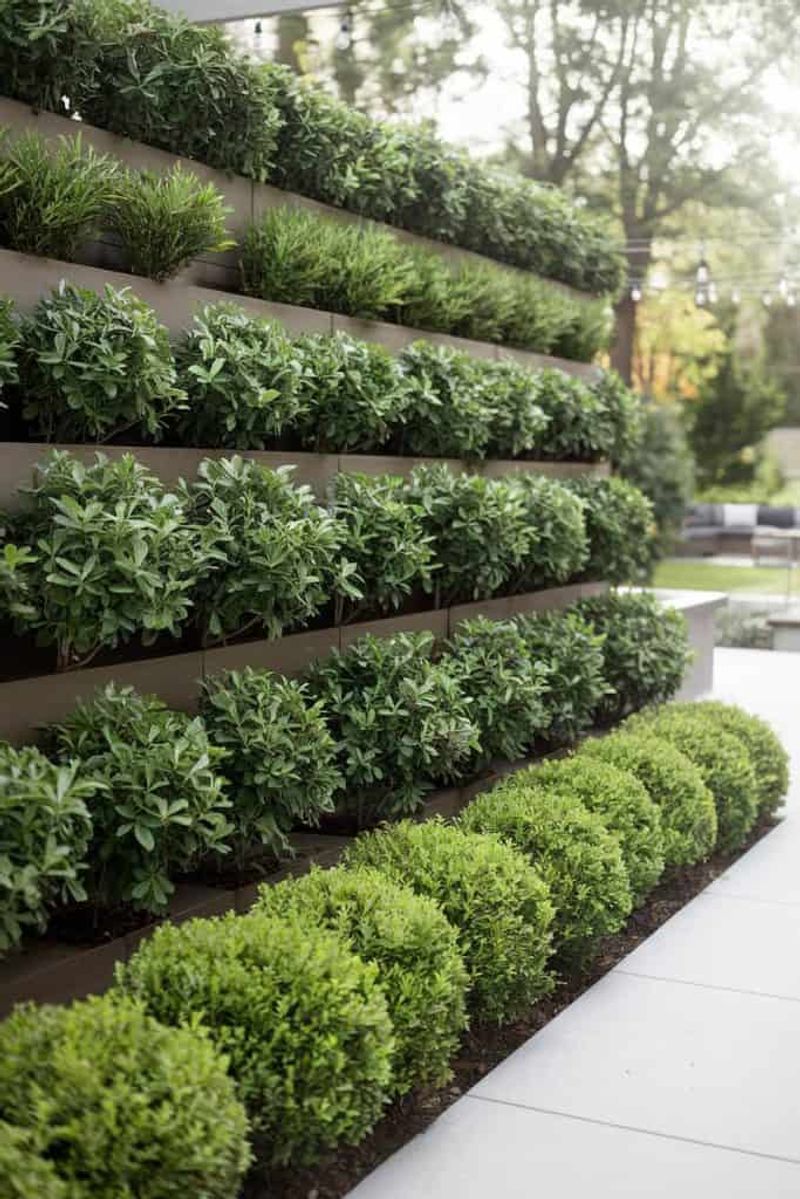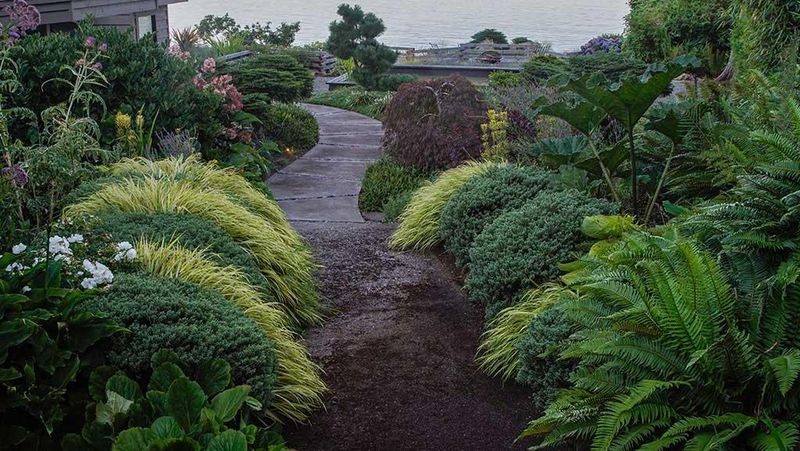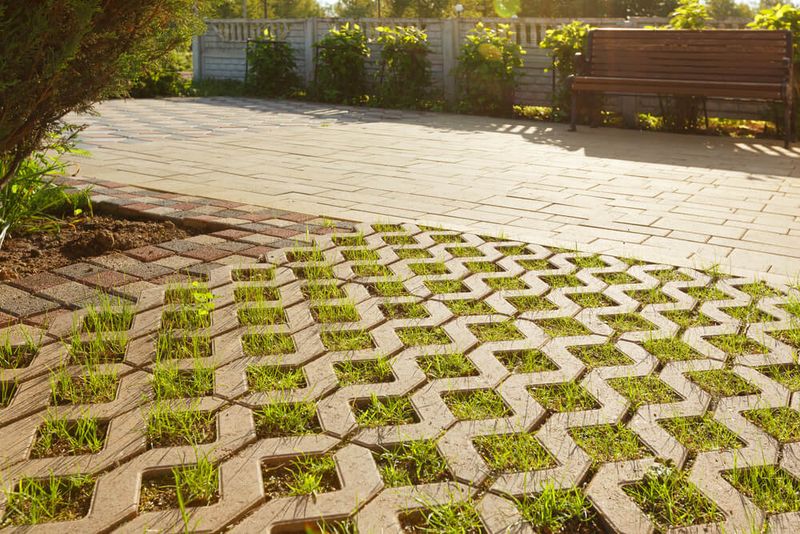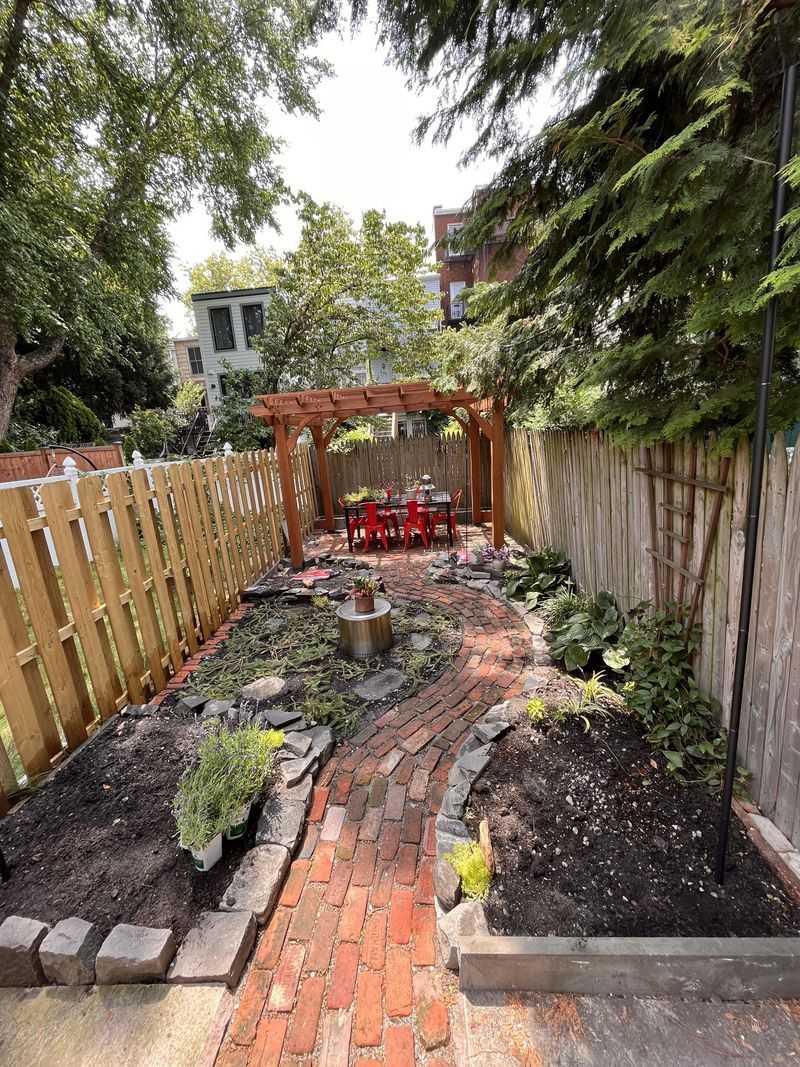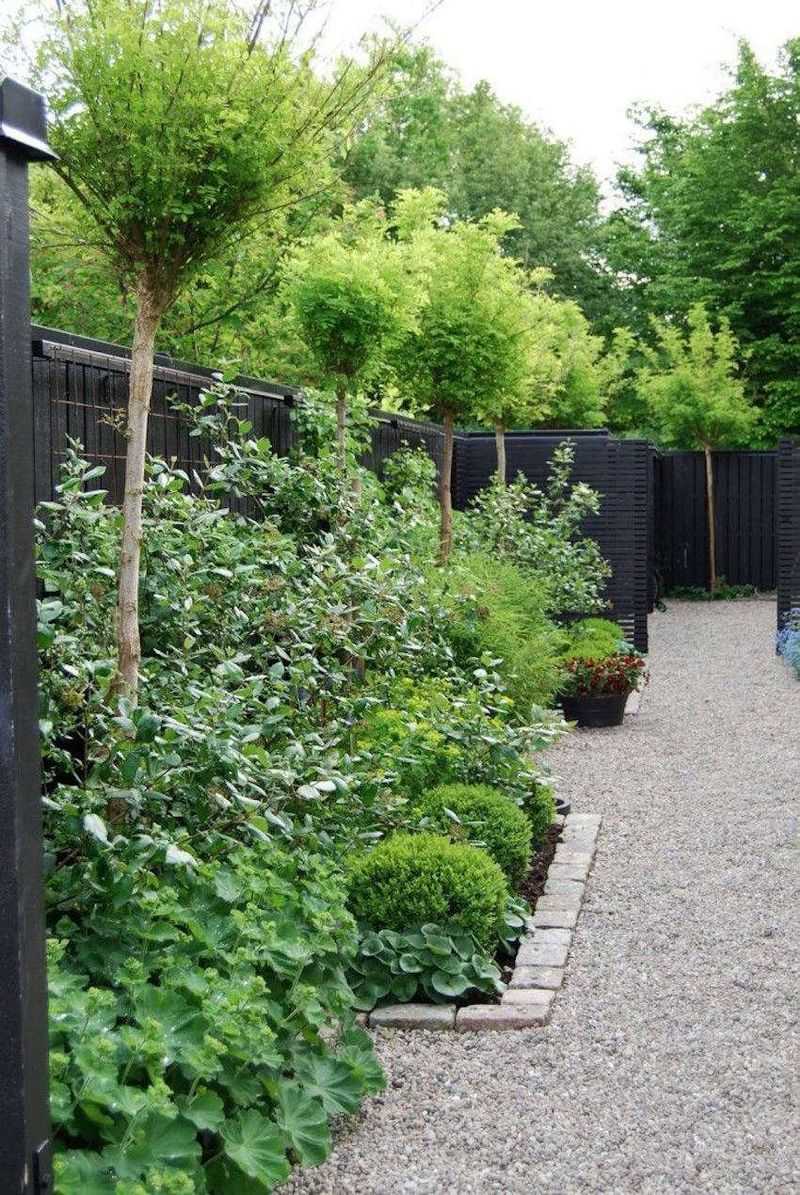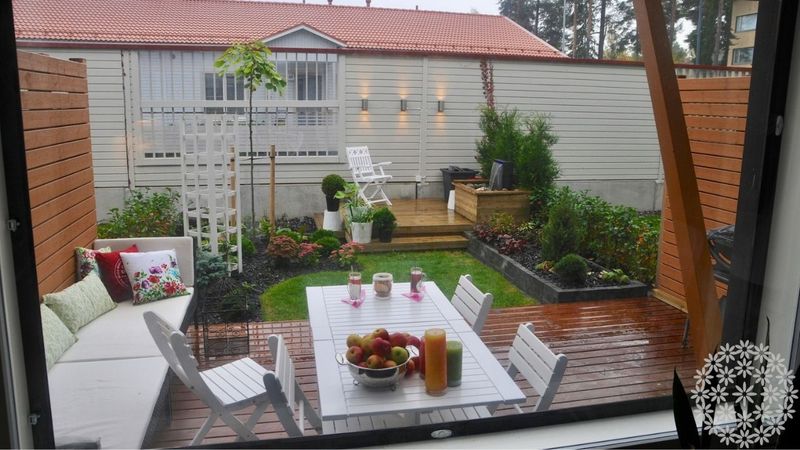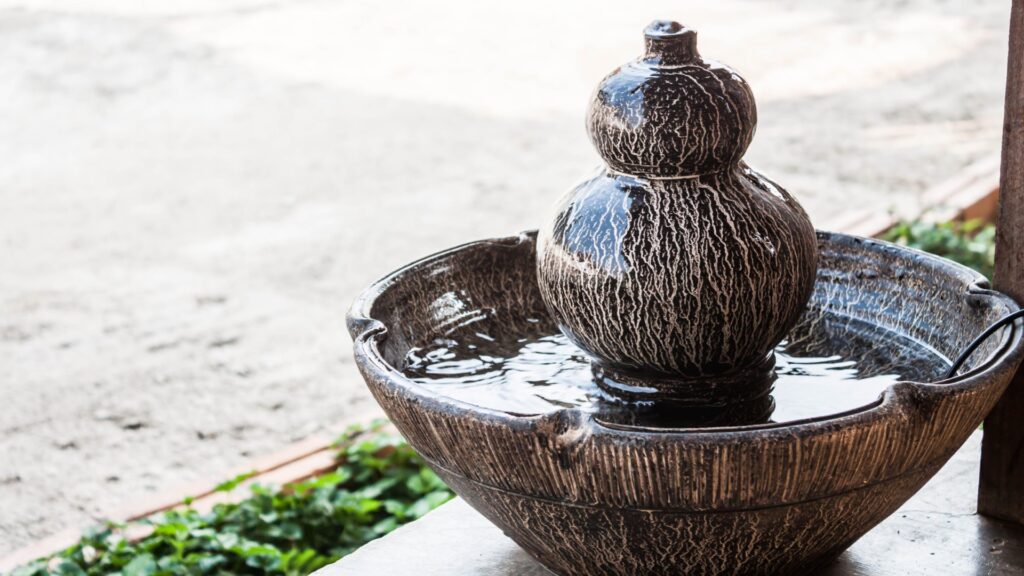You don’t need a sprawling backyard—or a pricey pro on speed dial—to craft a gorgeous, inviting outdoor space. From cozy patios to wide-open lawns, smart tweaks go a long way.
With a dash of creativity and a pinch of planning, any patch of green can turn into a backyard haven you’ll love to lounge in or show off. These tips help you squeeze the most out of every inch—no matter your home’s style or yard size.
1. Create Zones With Container Gardens
Empty corners of patios and entryways spring to life with strategically placed container gardens. Unlike permanent plantings, these movable displays let you experiment with different looks and locations until you find what works best.
Choose containers that complement your home’s architecture—ceramic pots for traditional homes, metal planters for modern styles. Group containers in odd numbers (three or five) for a more natural appearance, varying heights to create visual interest.
Container gardens solve multiple problems at once: they define spaces, add greenery where soil quality is poor, and can be refreshed seasonally without major effort or expense.
2. Embrace Native Plants For Effortless Beauty
Plants that naturally grow in your region already know how to handle local weather patterns and soil conditions. By selecting native species, you’ll create a landscape that thrives with minimal intervention, saving both water and weekend maintenance time.
Local garden centers typically highlight native options, but your county extension office can provide specific recommendations tailored to your exact location. Consider mixing flowering natives like coneflowers or black-eyed Susans with native grasses for year-round structure.
The bonus benefit? Native plants support local birds, butterflies and beneficial insects, turning your yard into a small ecosystem that contributes to the health of your neighborhood.
3. Install Smart Lighting For Evening Appeal
Outdoor spaces often go unused after dark simply because we forget to light them properly. Solar path lights require zero wiring and automatically illuminate walkways when the sun sets, making them perfect for DIY installation.
For more dramatic effects, try uplighting a special tree or architectural feature of your home. Low-voltage lighting systems have become much more user-friendly, with many offering smartphone controls to adjust brightness or set schedules.
Strategic lighting extends your usable outdoor time and highlights your home’s best features. Even the smallest yard looks more expansive and welcoming when thoughtfully lit, creating depth where daylight once flattened the view.
4. Design A Four-Season Structure Plan
Winter reveals the true bones of your landscape when deciduous plants lose their leaves. Planning for year-round interest means including elements that look good even when flowers aren’t blooming.
Mix evergreens with deciduous plants, aiming for a ratio of about one-third evergreen to maintain winter structure. Include plants with interesting bark, like paperbark maple or river birch, and those with distinctive shapes or seed heads that persist through cold months.
Small yards especially benefit from this approach since limited space means each plant needs to earn its keep throughout the year. A well-structured small garden often looks more intentional and designed than larger spaces with seasonal gaps.
5. Incorporate Vertical Elements To Add Dimension
Looking up creates the feeling of more space in confined areas. A simple trellis transforms a blank wall or fence into a growing surface for climbing plants like jasmine or clematis, effectively doubling your planting area without using more ground space.
Vertical elements also create natural dividers that help organize your landscape into rooms. Try placing an arbor between different garden areas, or use tall, narrow plants like arborvitae or ornamental grasses to screen utilities or create privacy.
The height variation makes your garden more interesting from inside the house too. When you look out windows, your eye travels up the vertical elements rather than stopping at a flat landscape, making your property feel larger.
6. Define Edges For A Polished Look
Professional landscapes always have clean lines between different areas. Creating distinct edges between your lawn, garden beds, and hardscapes makes even simple plantings look intentional and well-maintained.
Physical barriers like metal edging, stone borders, or brick prevent grass from invading flower beds while creating visual definition. For a budget-friendly approach, try cutting a clean V-shaped trench between lawn and beds using a straight-edged spade.
Edge definition works magic in small spaces by making the design appear more deliberate. When each area has clear boundaries, the overall effect is orderly rather than cluttered—essential when working with limited square footage.
7. Incorporate Multi-Function Features
Small yards demand that every element works overtime. A retaining wall that doubles as seating, or stairs wide enough to serve as impromptu benches maximize functionality without cluttering limited space.
Look for opportunities to combine purposes: a water feature that collects rainwater, a storage bench that provides seating, or a fire pit that also serves as a table when covered. Plants too can multitask—fruit trees provide shade, blossoms, and food in one footprint.
This approach creates spaces that adapt to different needs throughout the day or year. Your morning coffee spot becomes evening entertainment space, and the play area transforms into a meditation garden when the kids aren’t around.
8. Scale Elements To Your Space
Oversized features overwhelm small yards while tiny elements get lost in large spaces. The right scale creates harmony regardless of your yard size or home style.
For compact areas, choose smaller varieties of popular plants—like dwarf hydrangeas instead of full-sized ones—and slim-profile furniture. Large properties benefit from grouping plants in bold masses rather than scattered individuals, and using substantial hardscape elements that won’t disappear visually.
Scale extends to maintenance too. A water feature should match your willingness to maintain it, and plant selections should reflect the time you realistically have for care. Properly scaled elements look natural in their setting and require appropriate effort for their impact.
9. Create A Clear Focal Point
Every yard needs something that draws the eye and anchors the design. Without a focal point, even beautiful plantings can feel random and disorganized to visitors.
Small spaces might use a colorful front door, a specimen plant, or a simple water bowl as their centerpiece. Larger yards can support bigger statements like a mature tree, pergola, or substantial water feature. Position your focal point where it’s visible from key viewing areas like windows or seating spots.
Having a clear star of the show actually makes the rest of your landscaping decisions easier. Once you establish what should grab attention first, other elements can play supporting roles, creating a more cohesive overall design regardless of your yard’s size.
10. Layer Plants For Depth And Privacy
Flat, one-dimensional planting beds miss the opportunity to create visual depth. Professional landscapers use layering—placing taller plants toward the back, mid-height specimens in the middle, and low-growing varieties in front—to maximize interest in limited space.
This approach works equally well against house foundations, fences, or as island beds. For privacy screening, staggered layers feel less wall-like than a single row of identical plants while providing better coverage. Varying plant textures within each layer adds extra dimension.
Even the smallest yards benefit from this technique. A narrow foundation bed with just three layers—perhaps ornamental grasses behind daylilies with creeping sedum in front—creates more visual impact than plants arranged at the same height.
11. Use Repetition To Create Rhythm
Random collections of plants often look chaotic, regardless of yard size. Repetition of certain elements—whether plants, materials, or colors—creates visual patterns that guide the eye through your landscape.
Try using the same plant variety in multiple locations, repeating a hardscape material throughout different garden features, or maintaining a consistent color palette. This doesn’t mean creating boring symmetry; rather, it establishes familiar touchpoints that make the design feel intentional.
Small yards particularly benefit from this approach since limited space can quickly feel cluttered. Three Japanese forest grass plants spaced throughout a compact garden create more impact than three different grass varieties, giving the eye restful places to land amid other plantings.
12. Incorporate Permeable Surfaces
Solid concrete patios and walkways create runoff problems and missed planting opportunities. Permeable alternatives like gravel paths, stepping stones set in groundcover, or special pavers with gaps allow water to soak into the ground rather than flooding storm drains.
These surfaces work in yards of any size and style, from formal to casual. The spaces between pavers or stones provide bonus planting pockets for tough, low-growing plants like thyme or Irish moss that add color and texture underfoot.
Beyond their practical benefits, permeable surfaces often look more natural and inviting than solid concrete. The varied textures and integrated plants soften hardscapes, creating a more harmonious transition between built elements and the surrounding landscape.
13. Design With Maintenance In Mind
Beautiful landscapes quickly lose appeal when they demand more upkeep than you can provide. Honest assessment of your maintenance tolerance should guide every plant and feature selection, regardless of yard size.
Group plants with similar water needs together to avoid both over and under-watering. Place high-maintenance specimens where you’ll actually see and enjoy them daily. Consider how plants will grow over time—that cute little spruce might eventually block your windows if planted too close to the house.
Low-maintenance doesn’t mean boring. Replacing lawn with groundcover in hard-to-mow areas, installing drip irrigation on timers, or choosing long-blooming perennials instead of annuals can dramatically reduce work while maintaining visual appeal.
14. Disguise Utilities And Problem Areas
Every property has eyesores—air conditioning units, garbage cans, or awkward corners. Strategic screening transforms these necessary evils from visual distractions into design opportunities.
Tall grasses or shrubs can hide utilities without blocking service access. Decorative panels or lattice screens work well for garbage areas. For narrow side yards that collect clutter, installing shelving or creating an herb garden redirects attention from the space limitations.
Small yards actually have an advantage here—with less space, screening elements become features themselves rather than just utilitarian solutions. A trellis hiding an electrical box becomes a focal point when covered with flowering vines, serving double duty in compact areas.
15. Consider Views From Inside The House
Windows frame your garden like living paintings, yet many homeowners focus only on how the landscape looks from outside. Planning views from key indoor spots—kitchen sink, dining table, home office—ensures you enjoy your efforts even when indoors.
Position special plants or features where they’ll be visible through windows. Frame doorways with plants that welcome visitors while looking good from inside too. Remember that evening views matter as well—plants backlit by setting sun create dramatic silhouettes visible from interior rooms.
This approach works regardless of property size because it’s about strategic placement rather than quantity. A single perfectly positioned ornamental tree visible from multiple windows provides more daily enjoyment than an elaborate garden area hidden from view.
16. Add Sound For A Sensory Experience
Great landscapes don’t just look beautiful—they engage all your senses. Incorporating sound into your outdoor space adds another layer of relaxation and atmosphere that works in yards big or small.
Water features like bubbling fountains or wall-mounted spouts offer calming, consistent sounds without overwhelming conversation. In windy areas, ornamental grasses or bamboo rustle gently and bring natural movement to life. Wind chimes, placed sparingly, can add subtle melodies without becoming a distraction.
Sound is especially powerful in compact spaces where privacy might be limited—masking nearby street noise or neighbor conversations with natural tones helps transform your yard into a personal retreat. It’s a small touch that creates a big emotional impact.

